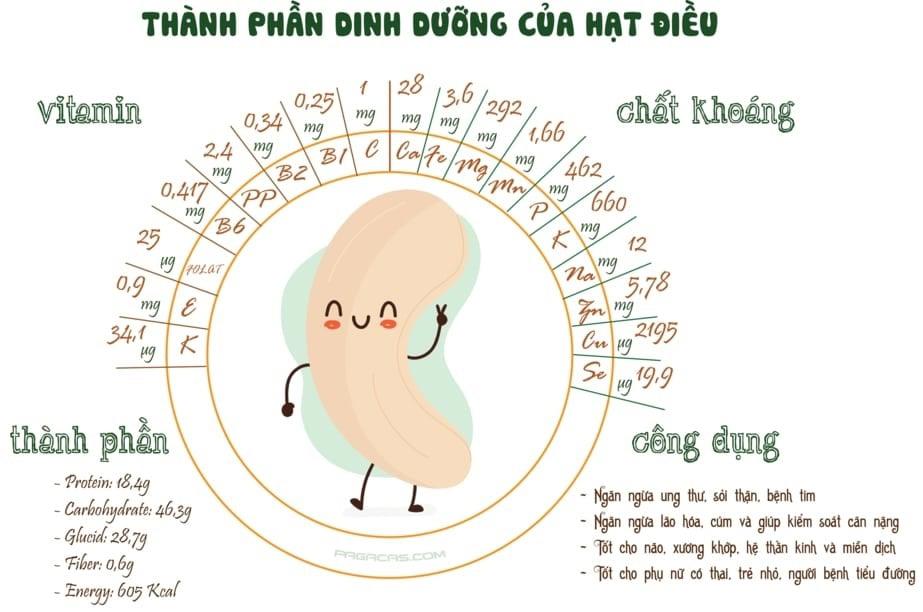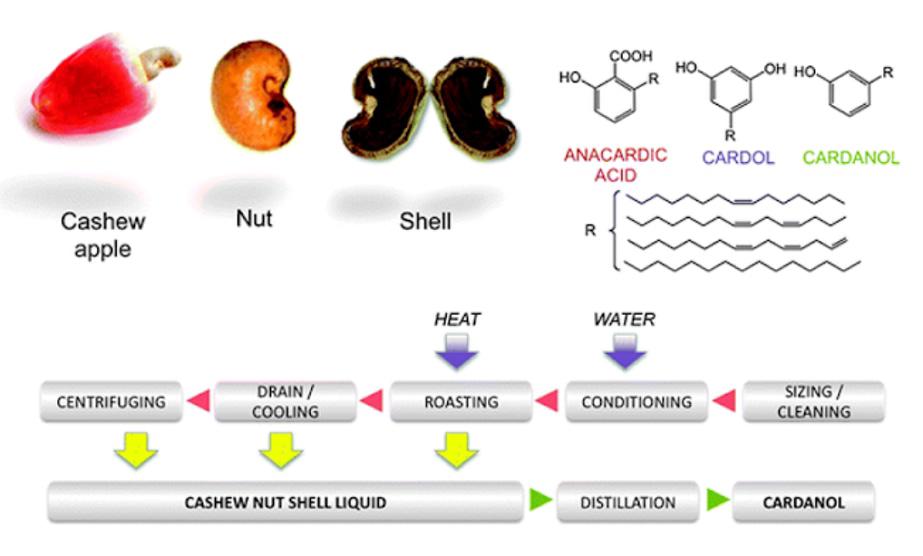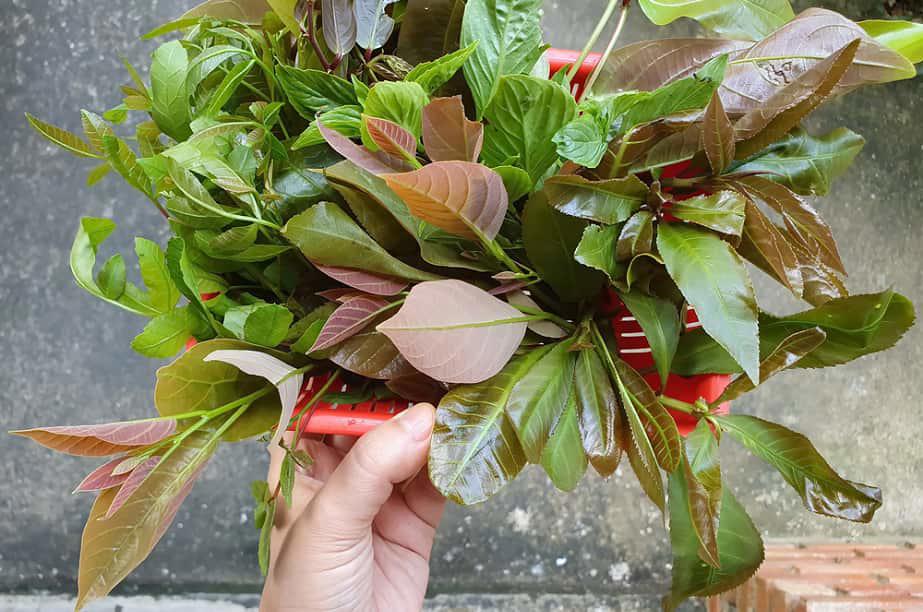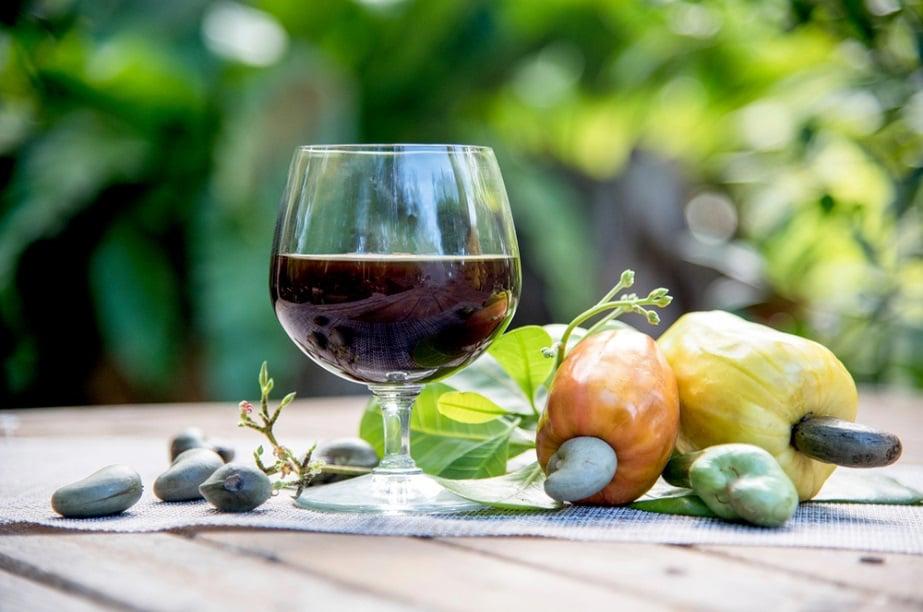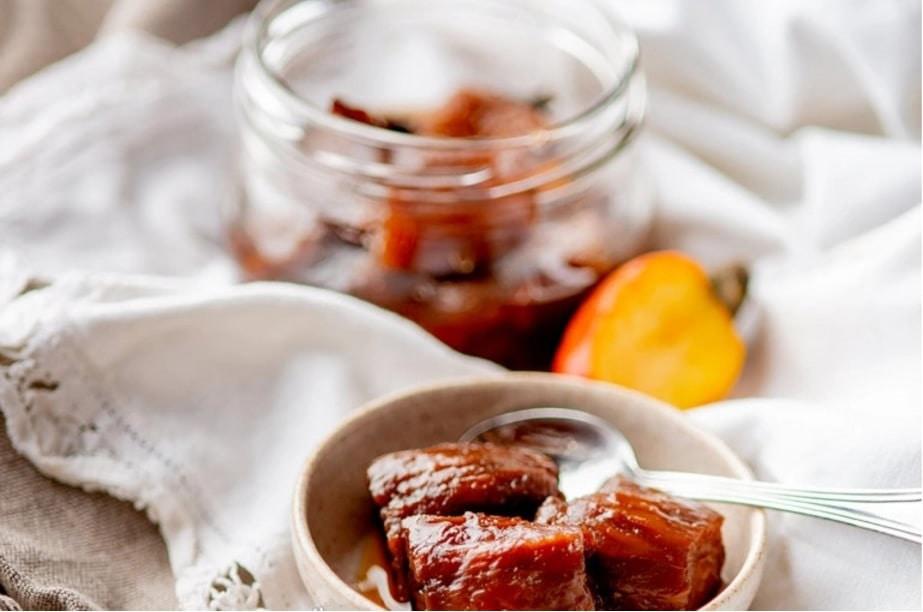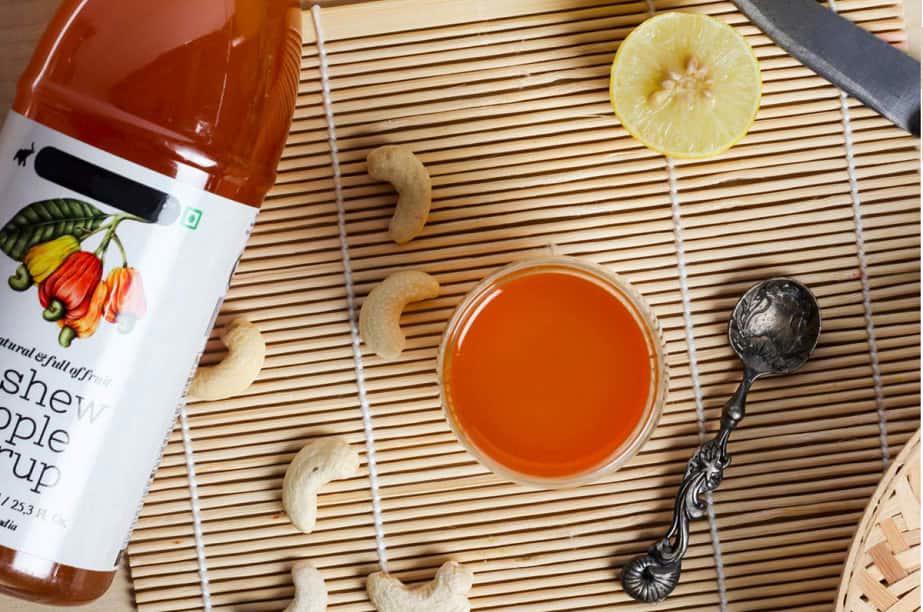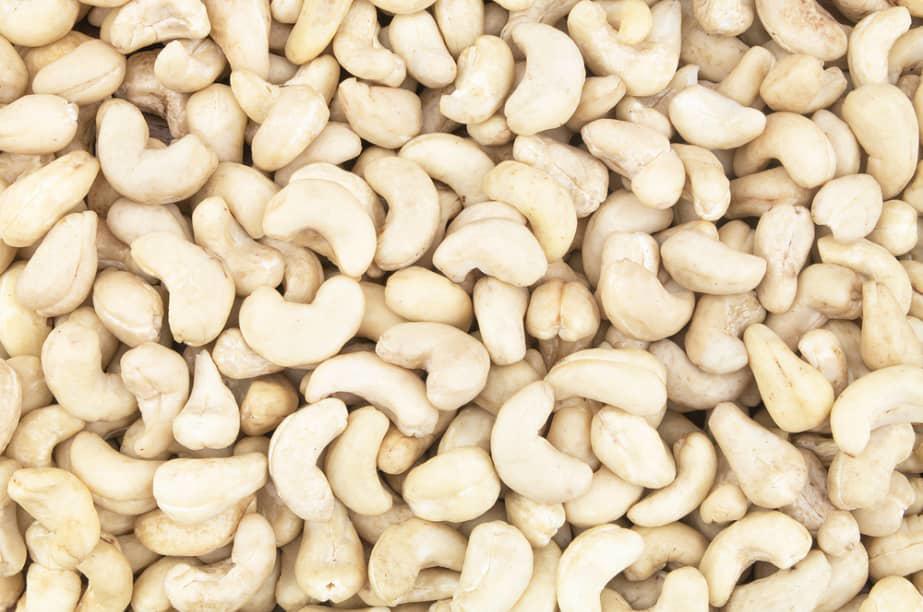Cashew nut plant, as well as other crops, is attacked by many insects and fungi separately or in combination, causing many different diseases for the tree and serious damage to production and sometimes death to the whole plant. However, in terms of damage, the damage caused by pests is much greater than the damage caused by diseases. Therefore, preventing cashew pests and diseases is an important task in current cashew farming techniques.
One key thing to keep in mind is that planting techniques and plant quality make a great contribution to preventing pests and diseases of cashew trees. For instance, when planting cashews at an appropriate distance, the tree canopy when growing without being covered with each other will create ventilation in the cashew garden and at the same time the foliage will absorb enough light, which helps cashew nut plants grow and develop well and be healthy, be able to resist attacks or at least limit the spread of certain diseases. Currently, the use of chemicals (pesticides) to eliminate pests has become popular and has been considered to be effective. However, it should be careful when using these chemicals to minimize harmful effects on the environment and human health.
Cashew trees at different stages of growth and development are attacked by many different insects, causing damage to productivity and product quality (cashew nuts and cashew fruits). Regarding cashew nut pests, a study shows that in India there are over 60 species. According to Pham Van Nguyen in "The Cashew Nut Tree" (1990), there are over 30 species in Vietnam, and according to Duong Hong Dat in " Cashew trees - Planting techniques and development prospects" (1999), there has been up to 39 harmful species belonging to 5 orders, 17 families and 33 different genera. However, in terms of the heavy economic losses, only the following
species are largely to blame:
- Stem and root borers
- Tea mosquito foam
- Leaf miner
- Leaf and blossom webbers
In addition, there are some less harmful species: defoliating caterpillars, shoot tip caterpillars, leaf thrips, leaf beetles and weevils, apple and nut borers, flower thrips and nut crinkler.
According to Le Nam Hung’s several investigation reports that surveyed the pest and disease situation of cashew trees from 5/1984 to 21/31/1984 in Song Be’s cashew areas (Cashew export farm in Ben Cat district) , Thuan Hai (from Phan Thiet to Phan Ri, Phan Rang), Ho Chi Minh City (Thu Duc, Tan Tao) about pests, the main pests that need to be controlled are tea mosquito (Helopeltis sp. ), red caterpillar (cricula sp.), elephant trunk borer (alcides sp.), bagworm (oiketicus sp.), green weevil (hypomeces sp.), leaf miner.
When studying and surveying the pest and disease situation of cashew trees in Xuan Truong and Xuan Loc (Dong Nai) from January 2000 to August 200, Professor Pham Van Bien and his colleagues discovered 11 pest species. Of those, tea mosquitoes are also the most serious pests, after that followed by haircutters.
|
Vietnamese name |
Scientific name |
Damaged part |
Level |
|
Tea mosquitoes |
Helopeltis anlonii |
Buds, young leaves, blossoms, fruits |
Very heavy |
|
Bud borers |
Alcides sp. |
buds |
Slight |
|
Longhorn beetles |
Plocaederus ferrugineus |
Stems, branches |
slight |
|
Plocaederus abesus |
Stems, branches |
heavy |
|
|
Green weevils |
Hypomeces sp. |
Leaves |
slight |
|
Red caterpillars |
Cricula trifenestrala. |
Leaves |
slight |
|
Bagworms |
Oiketicus sp. |
Leaves |
slight |
|
Leaf miners |
Acrocercops syngramma |
Young leaves |
average |
|
Leaf webbers |
Lamida moncusalis |
Leaves |
slight |
|
Thrips |
Selenothrips rabrocinctus |
Buds |
slight |
|
Rhiphorothrips cruentatus |
Buds |
slight |
Table - Main pest on cashew trees (Xuan Truong, Xuan Loc - Dong Nai)
- Tea mosquito (Helopeltis sp., Rhynchola, Miridae)
Tea mosquitoes are the most dangerous pests for cashew trees. There are 3 types of tea mosquitoes:
In Africa: Helopeltis schoutedeni Reuter, Helopeltis anacardii Miller.
In India, Brazil, Vietnam and neighboring countries: Helopeltis antonii Sign.
Helopeltis antonii Sign: The adult is reddish-brown, with a black head, red thorax, black and white abdomen. On the back and chest of both male and female bugs, there is a protruding part like a hump. This is a feature to distinguish between H. schoutedeni Reuter and H. anacardii Miller. The adult female is about 8mm long, male is about 6mm long.
Tea mosquitoes often appear to suck sap before 9.00 am and after 4.00 pm, starting from October to November, synchronizing with the emergence of new flushes, after the rainy season has just stopped. The population reaches a peak from December to January, when the trees are in full bloom. TMB prevails till December to February (a female bug can lay about 13 - 82 eggs, creamy white eggs). But in younger plantations, TMB can be noticed continuously.
The adult and even the young tea mosquitoes cause harm to young leaves, buds, flower petals and young fruits of cashew trees. The place where the bug sucks secretes a resinous substance. Tea mosquitoes use their proboscis to pierce soft tissue to suck out nutrients and secrete a toxin, causing stings to darken, forming necrotic cells and scars. At first the sting appears as a water-soaked wound, then the scar becomes brown or black caused by dead cells. On buds or young branches, wounds heal quickly, but these damaged areas will gradually dry out. If the bug causes damage to the leaves, dark brown spots appear on the entire leaf blade, the leaves become curved and have an unusual shape. If the insect attacks when the flowers bloom and begin to bear fruit, the inflorescences will be damaged and the new seeds will fall off. For young seeds, when the bug injects them, they will cause the seeds to wrinkle and dry right on the tree, or if they still continue to develop, they will be deformed and have many brown-black spots on the surface when the nuts are old, so the product value of the nut will be low.

Fig.1 - Tea mosquito eats cashew leaves
Prevention:
- Spraying Endosulfan 0.05 - 0.1% for the first time when the plant has just sprouted buds, the second time when the plant starts flowering, the second time use Monocrotophos 0.05% and the third time use Quinalphos 0.05%. Spraying should be done in the early morning and evening, when mosquitoes are very active.
- Spraying other pesticides such as Phosphamidon 0.03% and carbaryl 0.15% is also effective against tea mosquito bugs
- Stem and root borers (longhorn beetles)
Plocaederus ferrugineus L. (order Coleoptera order - family Cerambycidae)
These beetles prefer to attack 15-year-old mature plants and older plants. Also, they are capable of completely killing cashew plants. Symptoms of infected plants include the appearance of small holes in the root, resinous growths, extrusion of tree humus through these holes. They make leaves turn yellow and marcescent, then drop, which dries the branches and causes tree death (Pillai, 1975; Pillai et al., 1976).
The adult pest is a medium-sized reddish-brown beetle. They have dark-brown or black heads and thoraxes. The pest lays its eggs in slits beneath the bark at the tree stump or exposed roots. The hatched larvae bore into the bark tissue and feed on the sub-epidermal and sapwood tissues, creating tunnels with many nooks and crannies. That the pest burrows into the stem makes the resin coagulate on exposure to air. As the larvae feed, they expand the tunnel irregularly (deepest in the center and shallower at the edges) and fill the tunnel with powdery frass and fibers of dead cells. This leads to vascular tissue stuck with resin, the tree cannot grow up, from there leaves begin to turn yellow and fall off, the branches gradually dry out and eventually the plant dies. When the larvae have fully developed, they move down to bore into the roots of the tree and make cocoons there (located in the bark of the beetle). In some cases, Borers often make cocoons in the core of the tree. Adult longhorn beetles are often about 25- 40mm long. Female long-horn beetles lay oval, milky white eggs (4.5 x 2mm) hatching after 4-6 days. The larval stage lasts 6 - 7 months, the adult beetle is about 7 - 8 cm long. The pupal stage lasts from 20 days (when the cocoon has not yet formed) to 60 days (when the cocoon turns into a hard shell).
Two other species also cause harm to cashew trees like Plocaederus obesus Gahan and Batocera rufomaculata (P. ferrugineus L. Family).
- obesus
The longhorn beetle is chestnut brown and about 40mm long for the adult. Females lay about 100 oval, cream-colored eggs that will hatch after 5-7 days. When fully developed, the young beetle is about 75mm long, the larval stage lasts 6 - 8 months, the pupal stage lasts 18 - 22 days. Compared to P. ferrugineus, this type of longhorn beetle makes wider tunnels.
- rufomaculata
The longhorn beetle is raw umber. It has many black papules and many speckled yellow spots on its front wing cases. The adult is about 35 - 50mm long. Females lay eggs in cracks in the bark. The egg stage lasts 7 - 14 days. The larval stage usually lasts about 6 months and reaches about 10cm in length. Pupae are located in pits on branches and the pupal stage lasts from 3 - 6 months.
Prevention:
- On tests of preventing borers by using chemicals, it was shown that the results obtained depend on the destructive period and intensity of pests. Most pesticides are effective in preventing pests when they are still in the larval stage, but when the pest develops in the middle or final stages, chemical prevention is no longer effective. Therefore, for effective prevention, it is important to detect promptly when the pest begins to cause harm.
- Applying BHC 0.1% to the damaged stems and roots after removing the tunneled bark and tissue, also removing eggs, larvae and pupae. It is necessary to remove dead trees from the garden to limit the spread of the disease.
- Leaf borers: Acrocercops syngramma Meyr. (Order Lepidoptera - Family Gracillariidae)
Leaf borers often damage buds that appear after harvest or after the rainy season. Young cashew trees are more susceptible to insect attacks. The damage caused by borers is initially visible as winding lines, then the epidermis where the pest attacks swells, forming blisters that cause burns. Leaf borers, therefore, are also known as burn pests. If the damage is severe, the leaves will wrinkle and develop abnormally, and when these leaves are old, the bored areas become holes. In severely damaged areas, up to 75 - 80% of leaves are found to be damaged (Basu Choudhuri, 1962).
The adult worm is a silvery green moth that lays eggs in young leaves. The larvae are ivory once hatched and reddish-brown in adulthood. The larval stage lasts about 10 days.The adults find their way out of the perforated area, fall to the ground and pupate.
Prevention:
- This leaf borer can be prevented by spraying Phosphamidon 0.05% or Fenitrothion 0.05% at the budding stage, which is most effective. Spraying Endosulfan 0.05% to prevent bugs and mosquitoes on buds is also effective against this pest.
- Leaf and blossom webbers
Lamida moncusalis Walker and Orthaga exvinacea Hamps are two species of leaf webbers that damage cashew trees. In which, Lamida moncusalis W. is largely to blame.
Lamida moncusalis W. is a dark gray moth. According to Murthy et al., (1974) the egg stage lasts 5 - 6 days, the larva lasts 16 - 21 days, the young nymph 1 - 2 days, the pupa 8 - 11 days and the adult 3 - 6 days.
Symptoms are when the larvae attach young leaves and flowers together and live in them. Even fruits and nuts are attacked by this pest. Pupae live in silken cases in the attached areas.
Prevention:
- Spraying BHC 0.2% or Fenitrothion 0.05% or Endosulfan 0.05% or Carbaryl 0.15%, Malathion 0.15% right at the time of sprouting buds and after the rainy season.
- Bud borers (Alcides sp.)
Whiteflies are black in color, have a special long and hard proboscis. The adults are 12mm long and 3mm wide. They typically occur from late May to early July. The adults mate and lay many eggs in June. They lay eggs by using their proboscis to drill into buds, then lay 1 egg inside. The first symptoms of the disease are discovered when the leaves or buds turn yellow and wither. Larvae destroy the inside of buds and fill that place with powdery frass. The larva's head is brown, its body is slightly yellow. They often pupate in perforated tunnels in the bud.
Prevention:
- Catching worms on young trees, pruning and burning damaged parts that are bored and laid eggs inside (including larvae and pupae). Then spraying Monocrotophos 0.05%. Continue spraying in case the population of pests increases.
- Spraying Wolfatox 1% or Sherpa 5% should be done on the buds when a lot of adults appear.
- Bagworms (Oiketicus sp.)
Bagworms appear abnormally. This pest destroys the green tissue cells of the leaf in a circular pattern from the top down. The bitten area causes the leaves to dry out and turn red and holes are left on the leaves.
Prevention:
- Spraying Quinaphos or Endosulfan 0.05% should be done.
- Red leaf-eating caterpillars
Cricula trifenestrata H. (Order Lepidoptera, Family Saturnidae) is a pest that appears erratically and causes serious damage to cashew trees by causing defoliation on isolated cashew trees in certain localities. The body of the caterpillar is covered with itchy hairs and spines. Adult larvae are dark brown and 50 - 60mm long. Pupation occurs inside a black silk cocoon surrounded by leaves. The adult is a reddish-brown moth with 3 concentric bright spots on the wings.
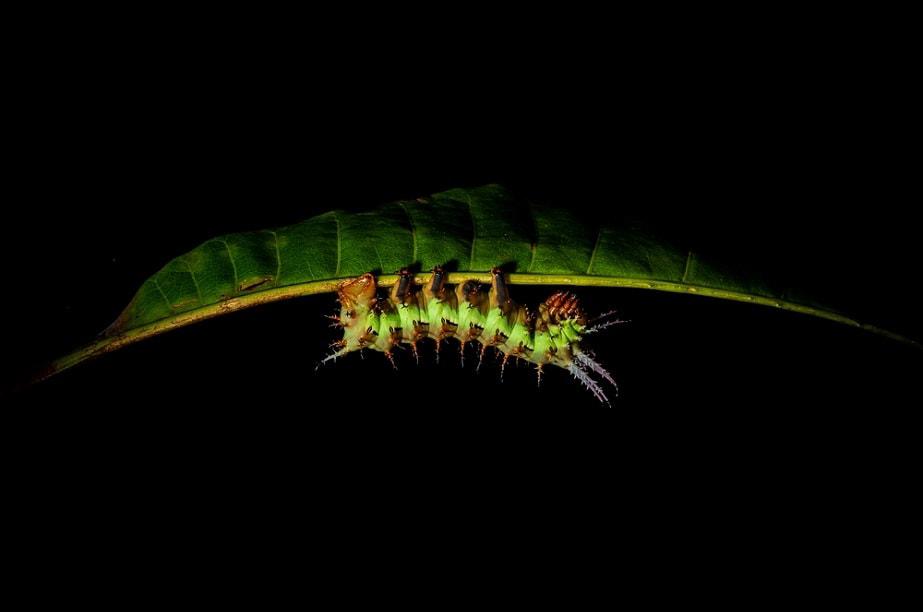
Fig.2 - The caterpillar eating cashew leaves
Metarastria hyrtaca Cram (Order Lepidoptera - Family Lasiocampidae) is also a pest that often attacks isolated cashew trees. Nair et al., (1974) studied the biology of this moth in Kerala (India) and showed that moths lay eggs in clusters on the underside of leaves. Their eggs hatch in 9 days. The larval stage lasts 33 days for males and 35 days for females. The larvae undergo 5 molts. The pupal period lasts 12 days. The early molting caterpillars feed on young leaves and the adults are very voracious, eating even older leaves. During the day, they gather in crowds on tree trunks and are only active at night. Rao and colleagues (1976) studied the biology of this pest in Andhra Pradesh (India) and showed that they typically occur from June and July until December at the same time with sprouting new buds in cashew trees.
Prevention:
- Spraying Quinalphos 0.05% or Endosulfan 0.05%.
- Green leaf-eating weevils (Hypomeces sp.)
These pests have lime-green color, very strong jaws and protruding eyes. They are very activen and often hide under leaves. If they see a movement, they fall to the ground and pretend to be dead. The weevil is 16mm long and 6mm wide. They often focus on biting young cashew leaves, starting from the outer edge to the vein of the leaf. When an outbreak occurs, they can eat all the leaves, leaving only the branches.
Myllocerus discolor B., another species of weevil, also causes serious damage to young cashew leaves, especially in nurseries and young cashew orchards.
Prevention:
- When this is few, use a net to catch and kill them. In case of regular occurrence of this pest, spray Quinalphos 0.05% or Endosulfan 0.05% once or twice.
- Above are a few major pests (tea mosquitoes, stem and root borers) and secondary pests that cause serious damage, which leads to significant yield loss of cashew trees. Preventing each type of pest with chemical methods (pesticides) at the right time has been considered effective against large economic losses caused by pests. However, it would be much more reasonable and less expensive to choose defense measures for plants that can simultaneously fight many different pests at certain times. In this direction, Ramadevi M., Radhakrishna Murthy Purcha (1983) proposed that spraying pesticides 2 to 3 times during each growth, flowering and fruiting stage of cashew trees will protect the tree against disease caused by many types of pests. Pathogenic attacks of all major and minor pests. Spraying Monocrotophos 0.05% and Carbaryl 0.15%, every 30 - 40 days during the growing season has been proven to be effective.
- In addition to chemical prevention, it is also necessary to pay attention (when possible) to applying biological pest control (natural enemies), for example, for mosquito bugs, 5 natural types have been identified. The enemies Sycanus collaris, Sphedanolestis signatus, Irantha armipes, Occamustypicus and Endochus inoratus will be very beneficial both technically and economically.
REFERENCE
Thanh D. P. Cashew nuts - Production and processing. (2003)





